Ceramics, craft, and creativity in the heart of the Tarantino hinterland
Why Go?
Nestled in the limestone hills between Taranto and Brindisi, Grottaglie is a town shaped – quite literally – by its geology. Known across Italy for its centuries-old ceramic tradition, Grottaglie is where craft meets community, and where contemporary creativity breathes new life into a rich historic core. It’s a town of contrasts: noble palazzi and anarchic street art, cavernous workshops and airy galleries, humble trattorie and bold modern kitchens.
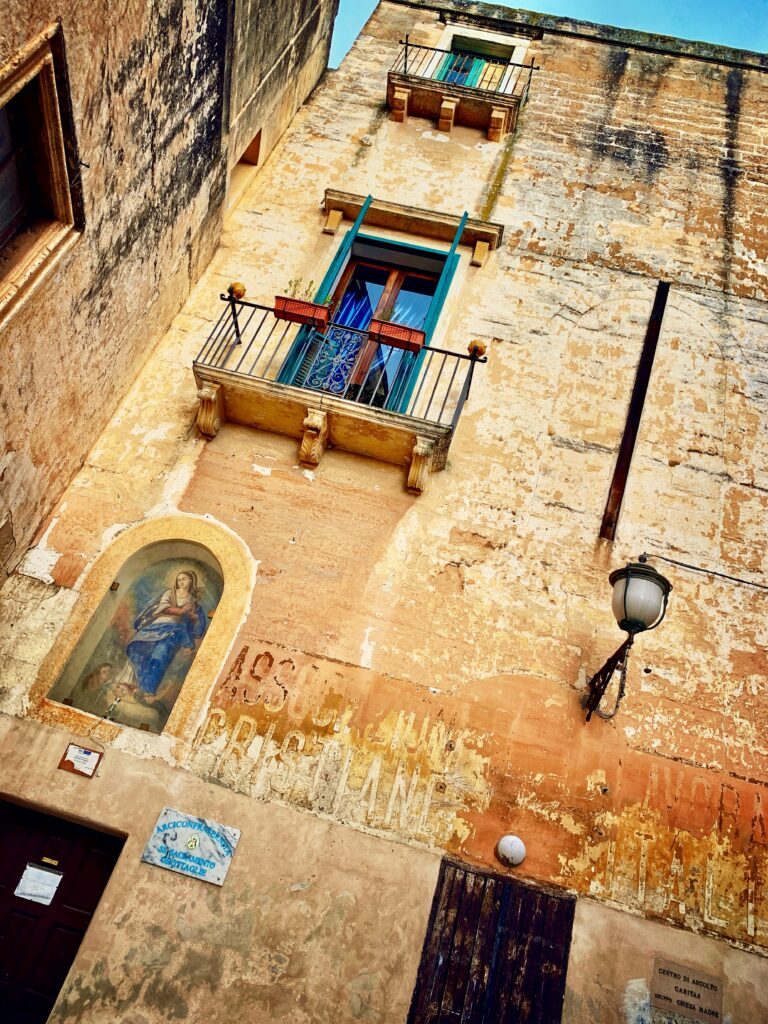
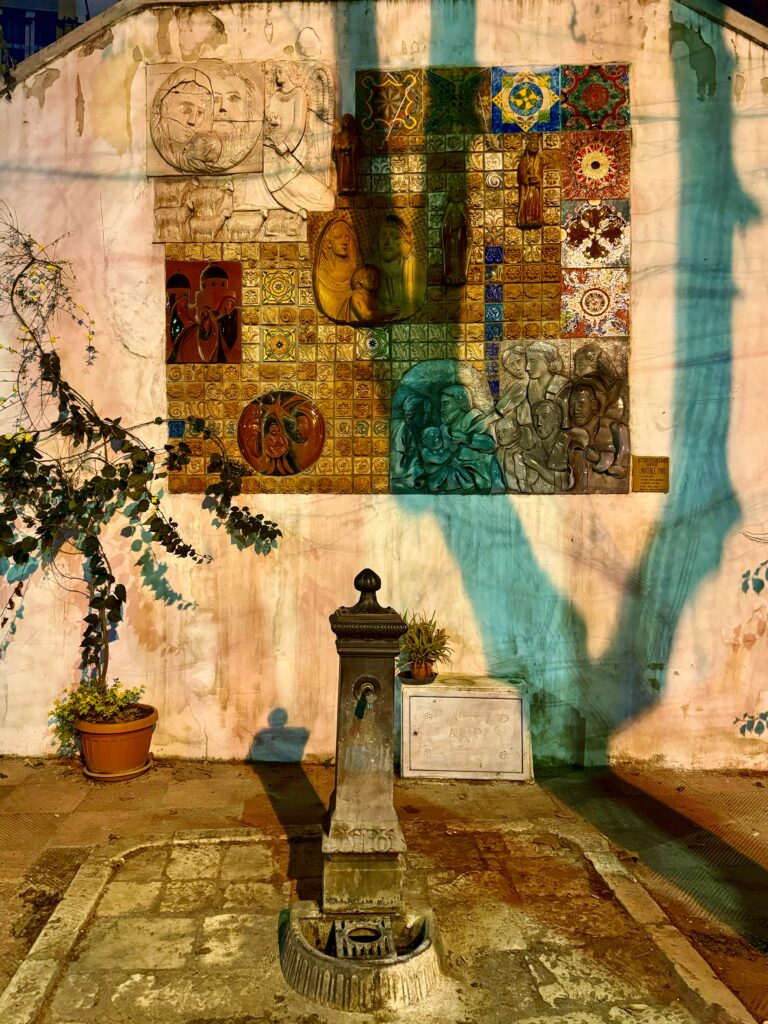
A Brief History of Grottaglie
Grottaglie takes its name from the Latin Cryptae Aliae – “many caves” – a reference to the rocky ravines and underground grottoes that riddled the land long before the town itself was founded. The area was settled since prehistoric times and became a Byzantine and then Norman stronghold in the Middle Ages. The town’s strategic position between Taranto and the Salento made it a contested site, and it passed through the hands of various feudal lords, including the powerful Archbishopric of Taranto, whose castle still dominates the town today.
From the 13th century, Grottaglie developed a strong agricultural economy and began producing ceramics on a large scale, thanks to the abundance of clay in the surrounding ravines. This artisanal legacy shaped the identity of the town and continues to draw visitors and collectors today.
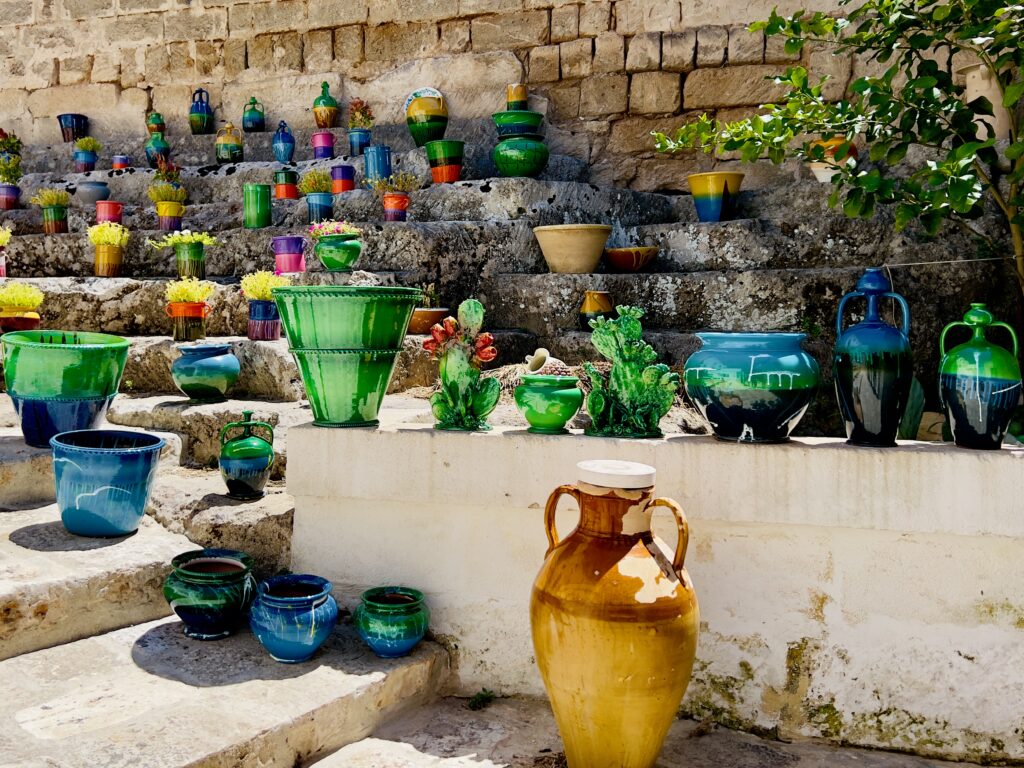
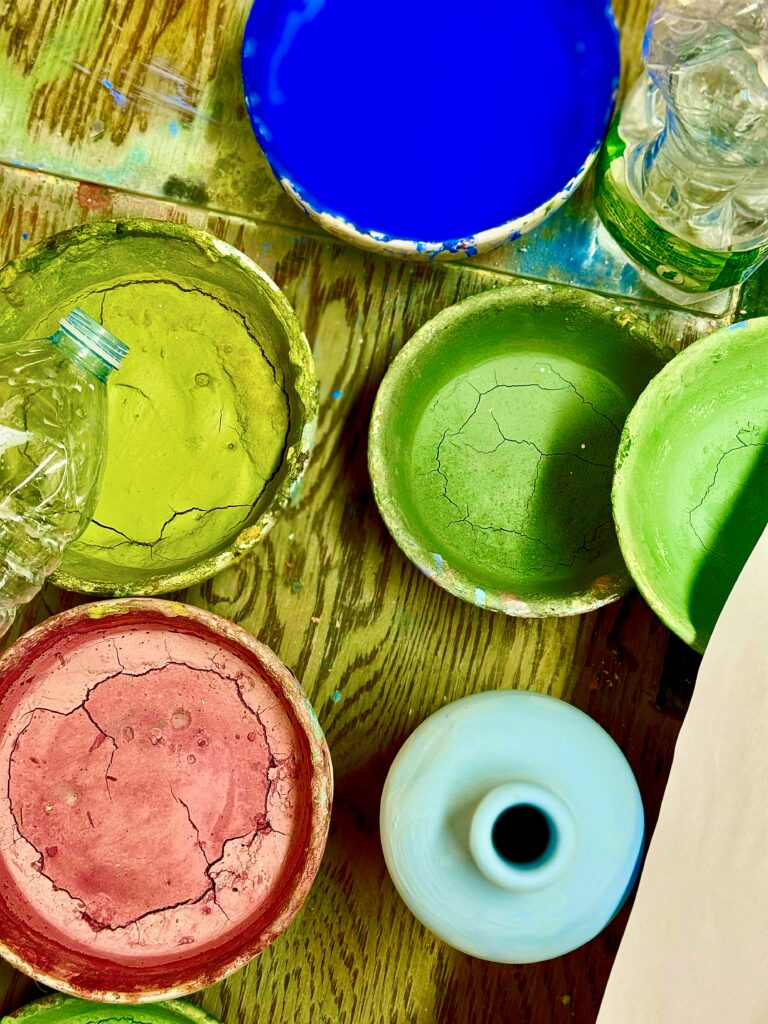
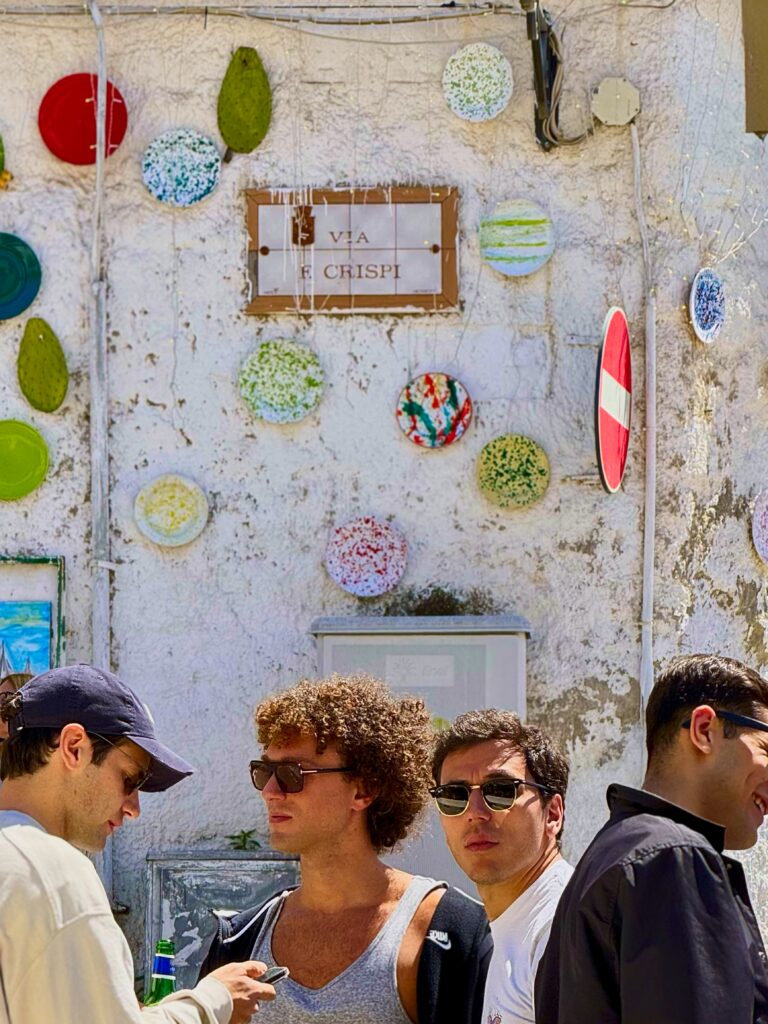
The Ceramics Quarter (Quartiere delle Ceramiche)
The beating heart of Grottaglie is its ceramics district, a cluster of studios and workshops nestled along Via Crispi, Via Caravaggio, and the streets radiating around the 14th-century Chiesa di San Francesco di Paola. Here, artisan potters work in spaces carved from the tufa rock itself, many of which have been handed down through generations.
Look for various interpretations of the pumo, the traditional bud-shaped ceramic finial said to bring luck, and the Fasano name (it’s everywhere).
Tip: Many workshops will ship ceramics abroad and offer VAT-free purchases for non-EU visitors.
We regularly shop at:
FasanoCeramiche srl | Perhaps the best-known Grottaglie brand abroad, this family studio supplies high-end homewares globally. Their iconic dinner plates – often painted with roosters, faces, or bold colour splashes – are beloved by design-conscious shoppers. Nicola Fasano has distinctive, beautiful pieces. Some smaller items are still good value, but the larger pieces tend to be more expensive, though beautiful and functional | Nicola Fasano website.
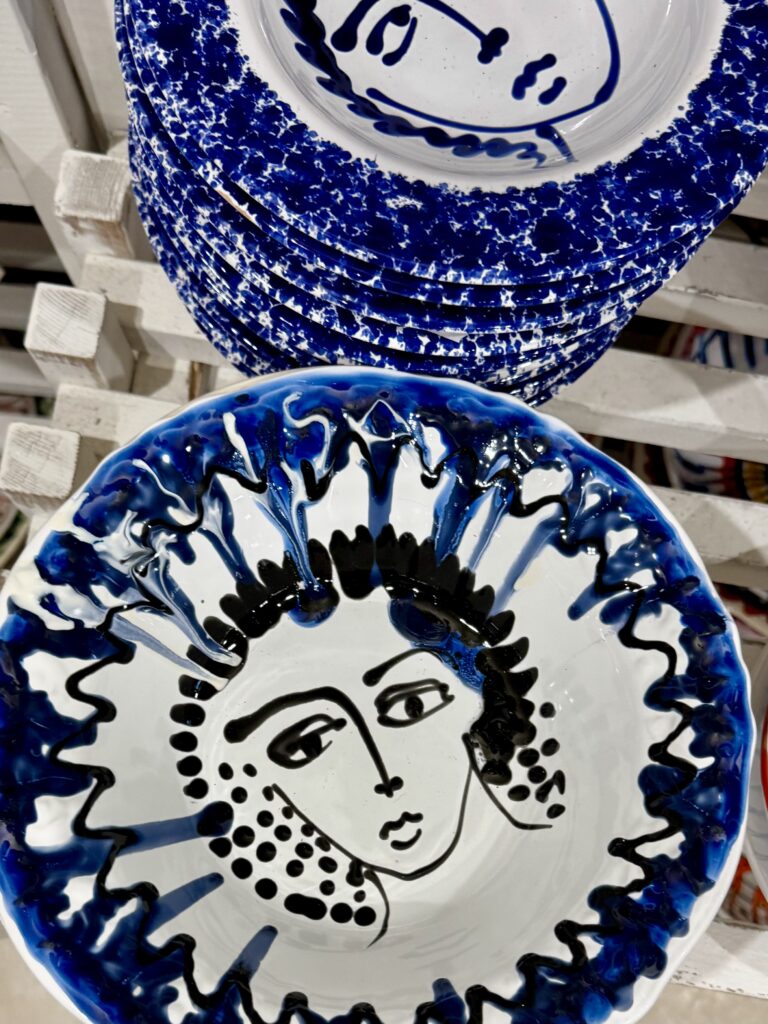
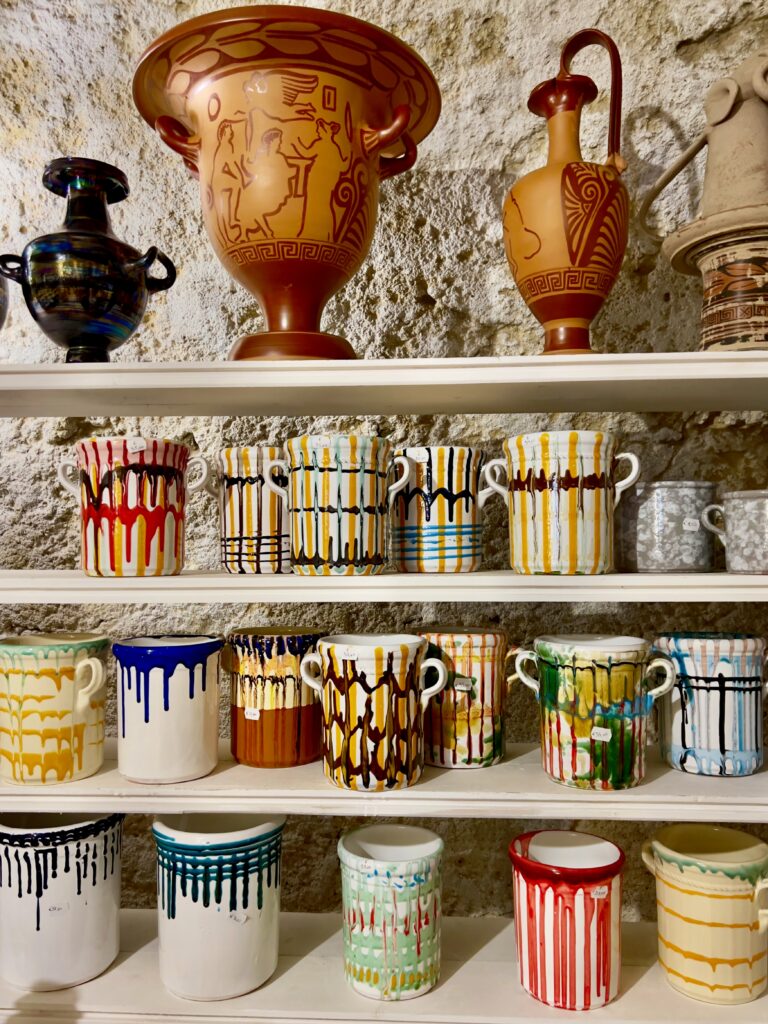
Antonio Fasano | we love the green colours of many of his pieces. Still one of the more expensive ceramicists, but again completely worth it for beautiful, functional pottery | Antonio Fasano website.
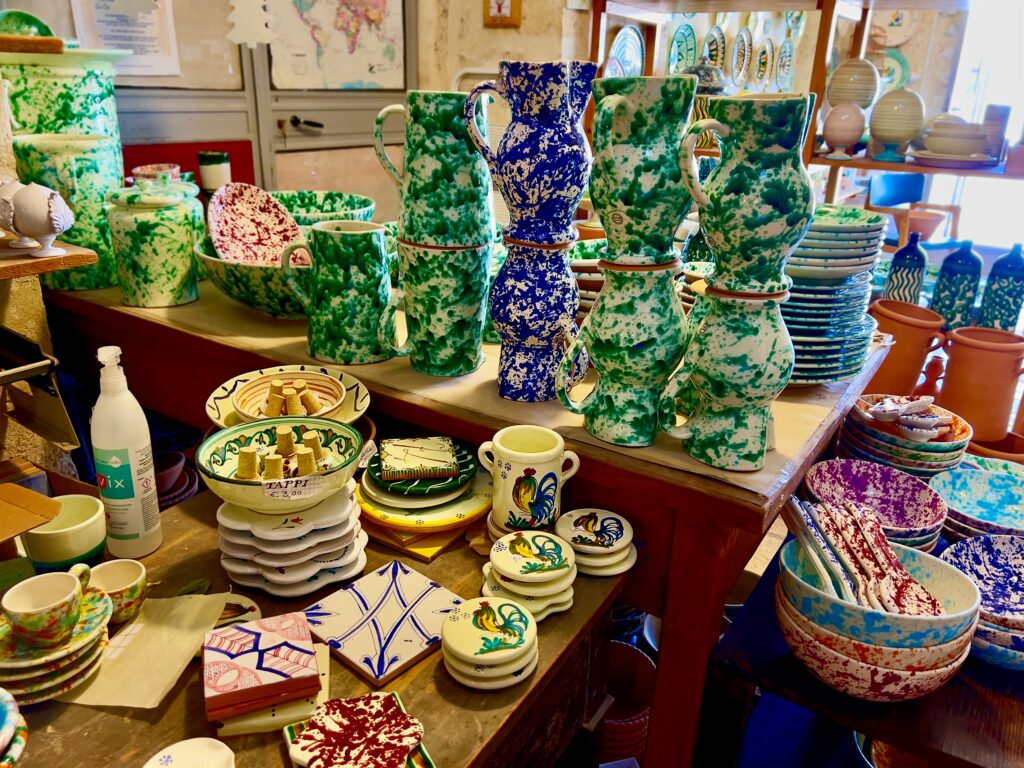
Cretaglie | very good value pieces. We stock up on coffee (espresso) cup sets, and plates. Choose faces that resemble friends, to give as gifts. Spectacularly good value.
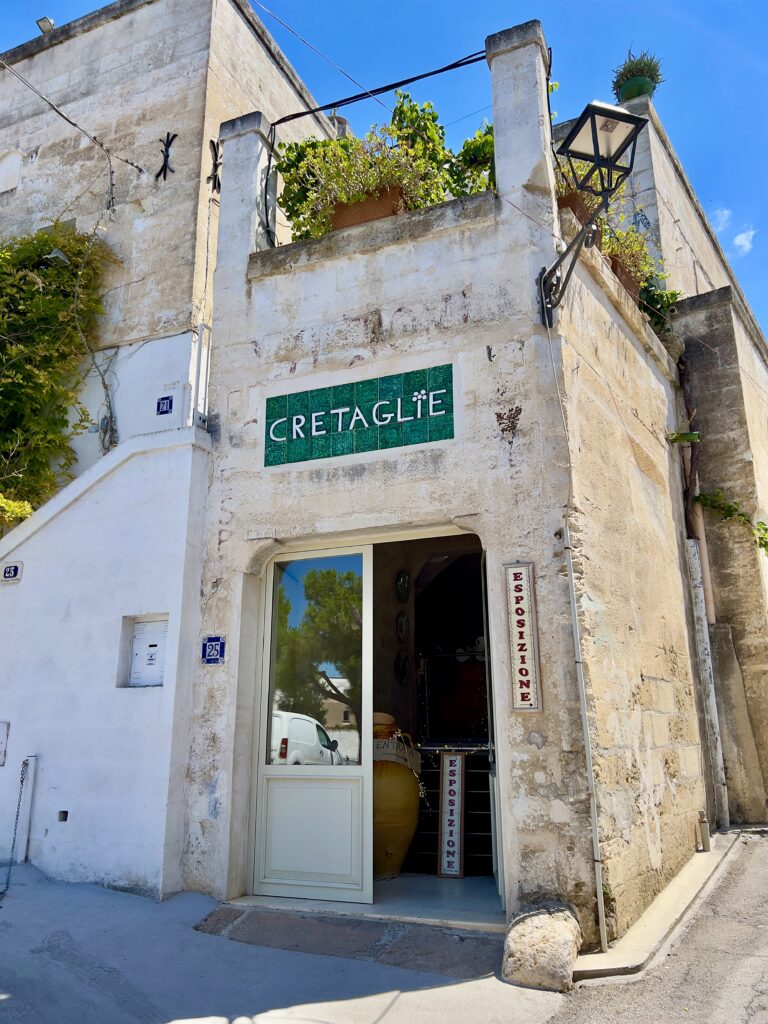
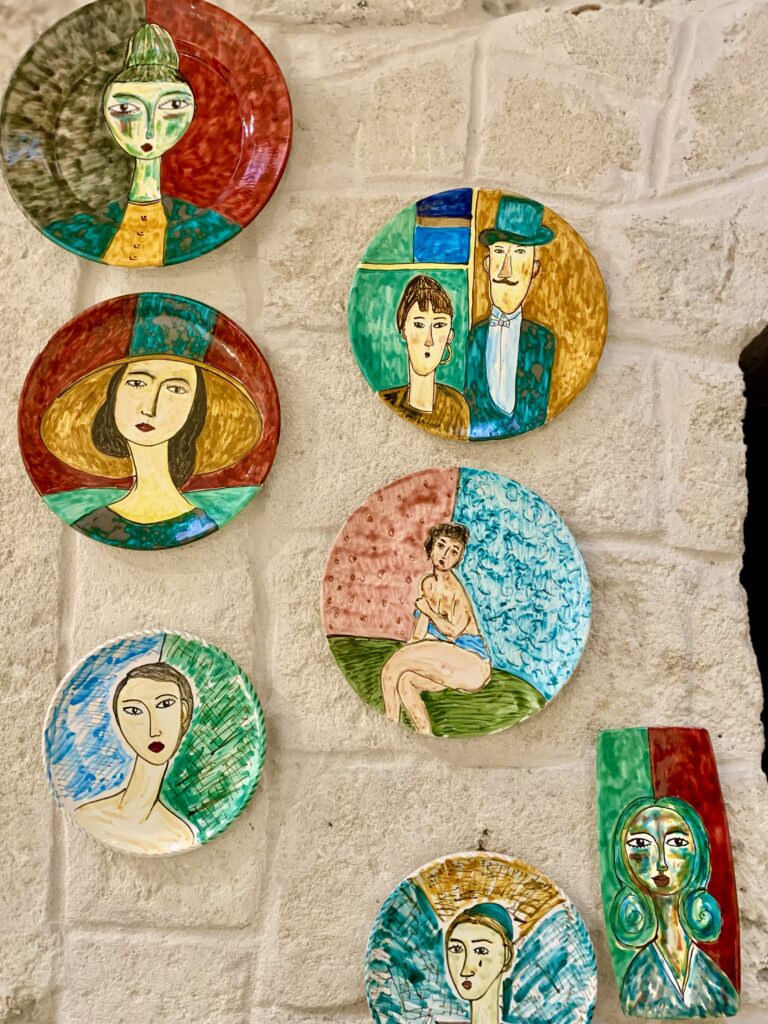
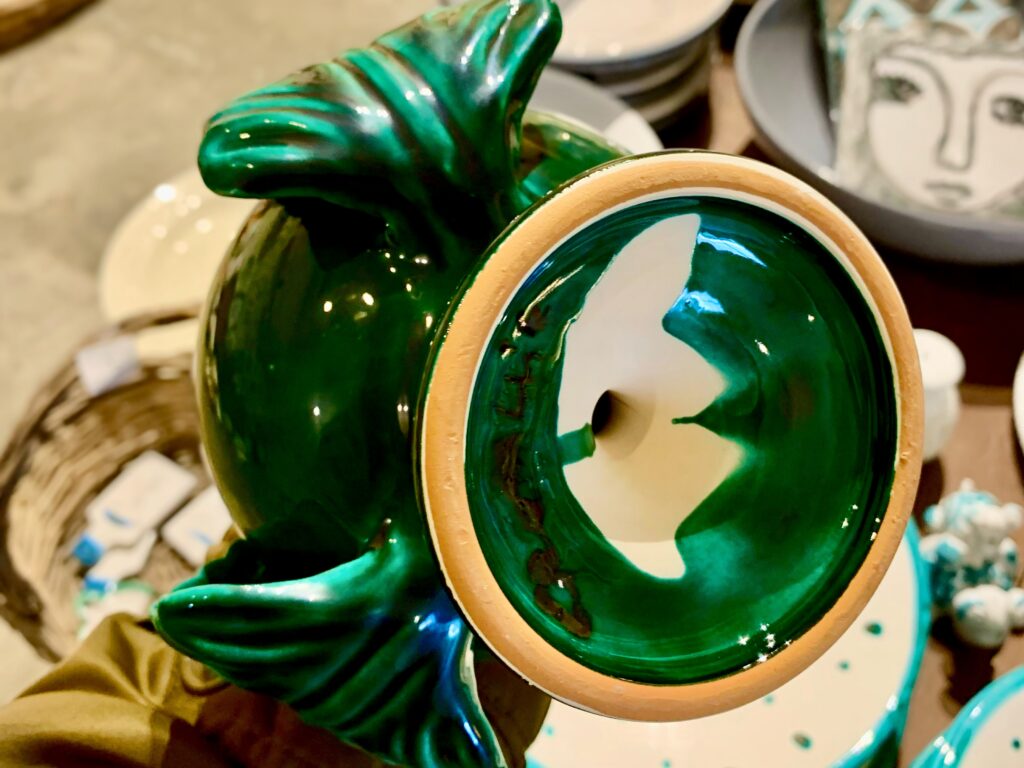
Grottaglie’s iconic “pupa con i baffi” and candle-holder knights:
The Medieval Feudal Custom: Ius Primae Noctis
In Grottaglie’s medieval past (then under feudal rule), it was believed that the local lord had the right – ius primae noctis – to spend the first night with any bride in his domain.
The Bold Deception of the Vigneron
Legend says that in the 18th century, a courageous vigneron from nearby Martina Franca married a beautiful woman from Grottaglie. To protect his bride from the cruel custom, he disguised himself in feminine attire and presented himself to the lord in her place. He wore a colorful dress and a feathered hat, managing to fool the guards — until the protruding moustache gave him away.
Punishment Turned Artistic Legacy
The feudal lord, enraged yet cunning, spared the vigneron’s life. Instead of executing him, he demanded all his vineyard’s produce — and insisted it be delivered in ceramic amphorae shaped like the disguised man . The potters of Grottaglie were commissioned to craft hundreds of these anthropomorphic vases — phallus-lipped wine vessels modeled on his cross-dressed form — resulting in the legendary “pupa con i baffi”.
The Ceramic Symbol Lives On
Over time, these vessels became stylized ceramic sculptures — feminine figures with striking moustaches — produced throughout Grottaglie’s Quartiere delle Ceramiche. They serve as a whimsical yet powerful reminder of the vigneron’s bravery and Grottaglie’s artisanal ingenuity.
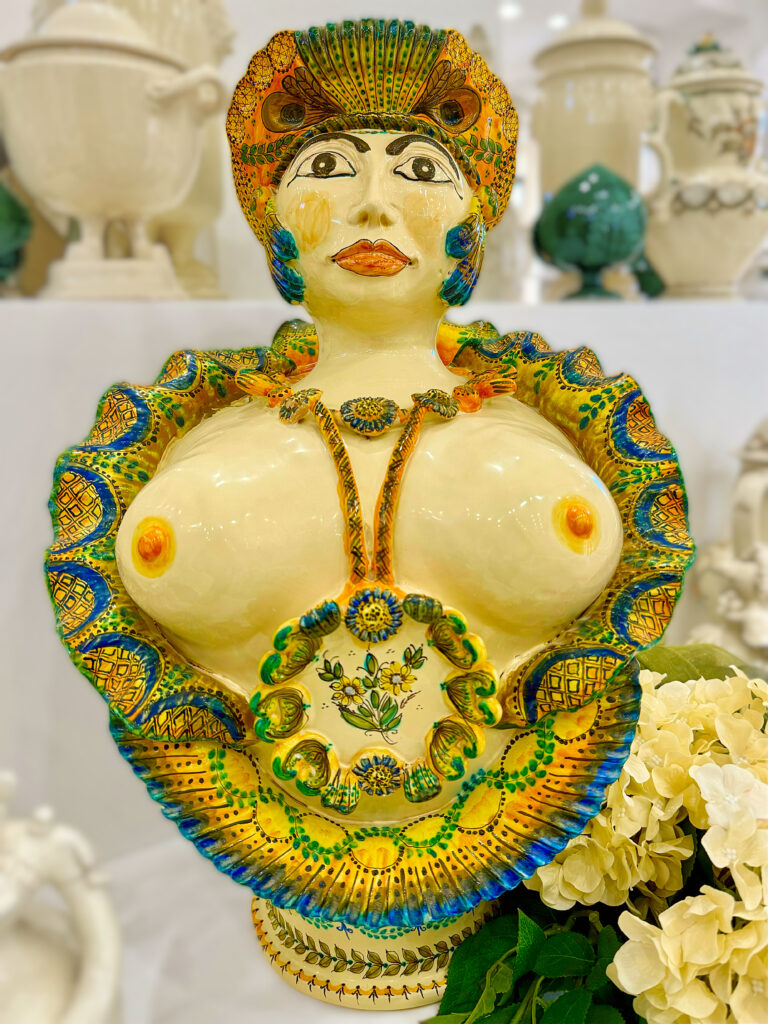
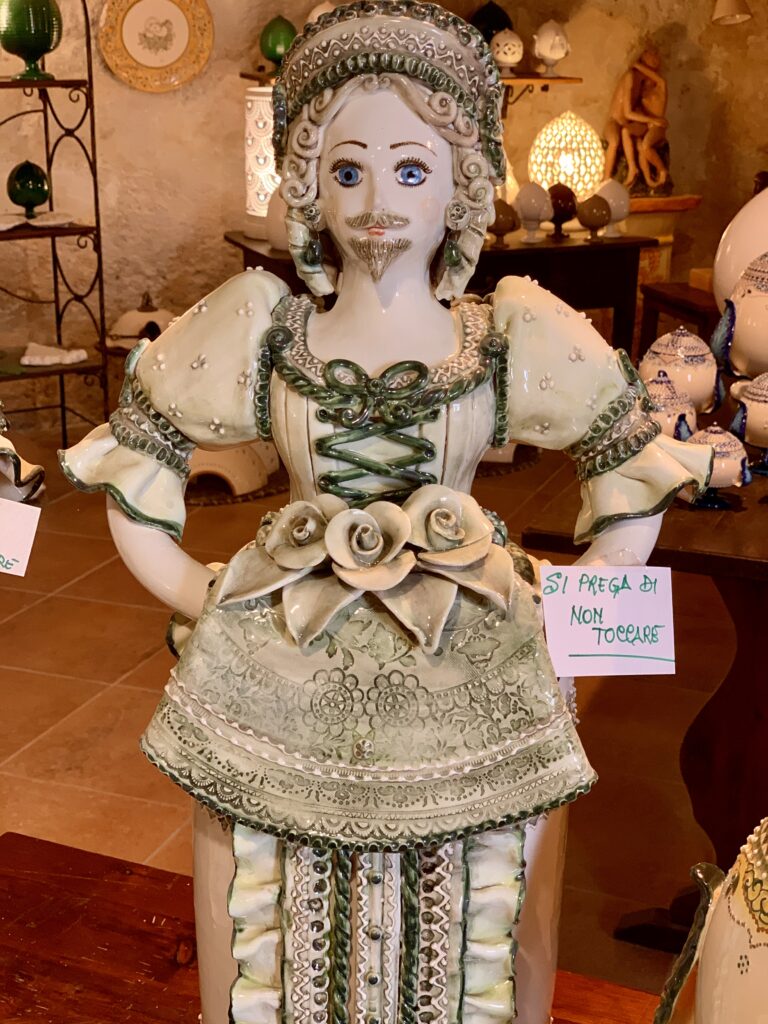
Why You’ll See Candle-Holder “Knights” Too
As this legend entered local lore, potters began producing related figures — often depicted as mustachioed knights or crusaders holding candles — embodying the themes of disguise, protection, and defiance. These “cavalieri” became decorative candle holders or lamp bases, echoing the vigneron’s knightly courage .
And the celebrated pumo in all colours.
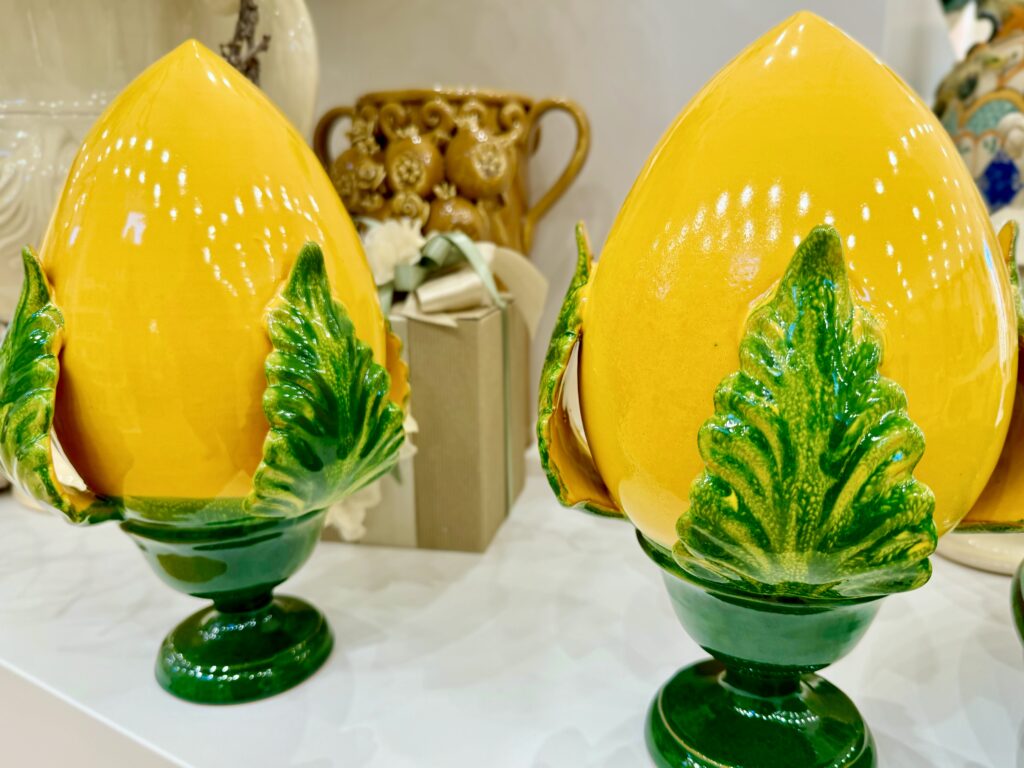
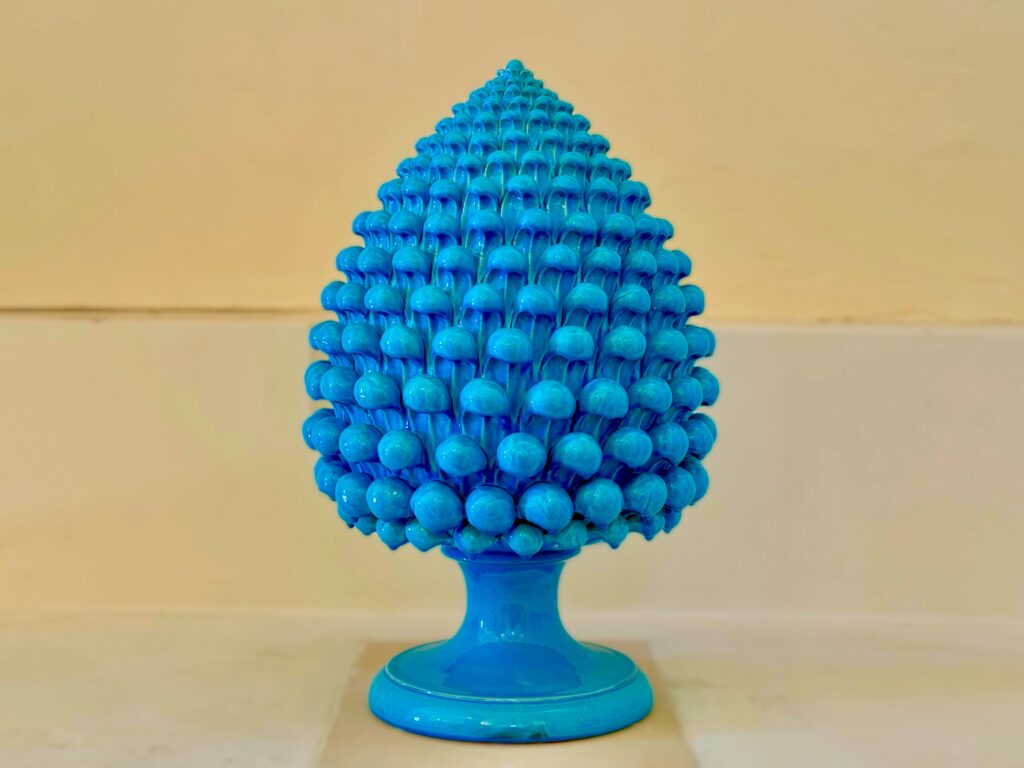
Street & Contemporary Culture
Grottaglie’s relationship with visual expression goes far beyond pottery. Since 2008, it has hosted the Fame Festival, a pioneering street art event that turned the town into an open-air gallery. While the festival itself is no longer active, many of its murals remain (if you know where to look).
Explore the narrow streets between Via Ciro Giovinazzi and Via Pellico to spot works by international artists like Blu, Os Gemeos, and JR. The contrast between these edgy, large-scale interventions and the ancient townscape creates a fascinating urban dialogue. Some works are fading, others have been reinterpreted or layered over, a reminder that art here is alive, impermanent, and part of the town’s fabric.
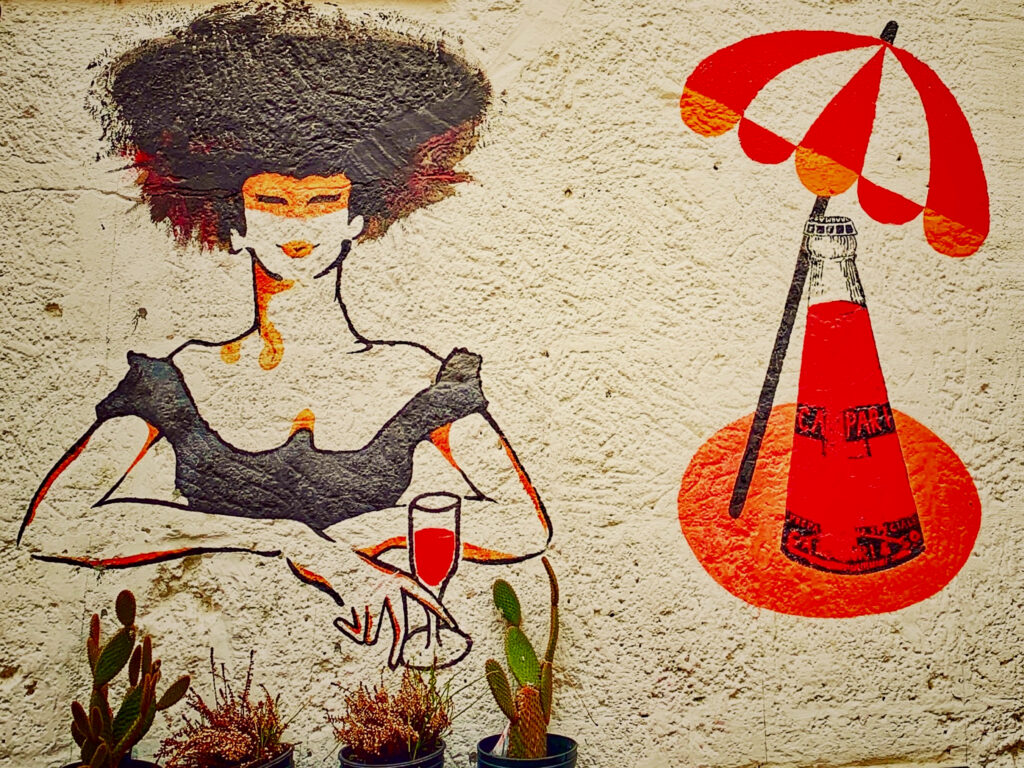
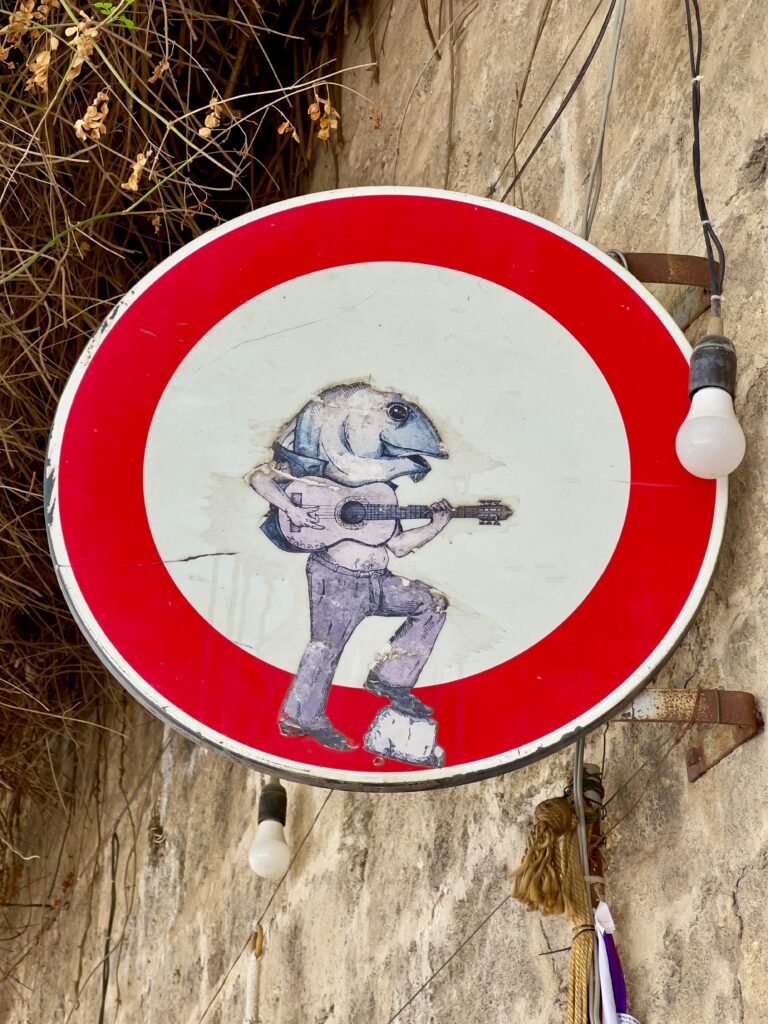
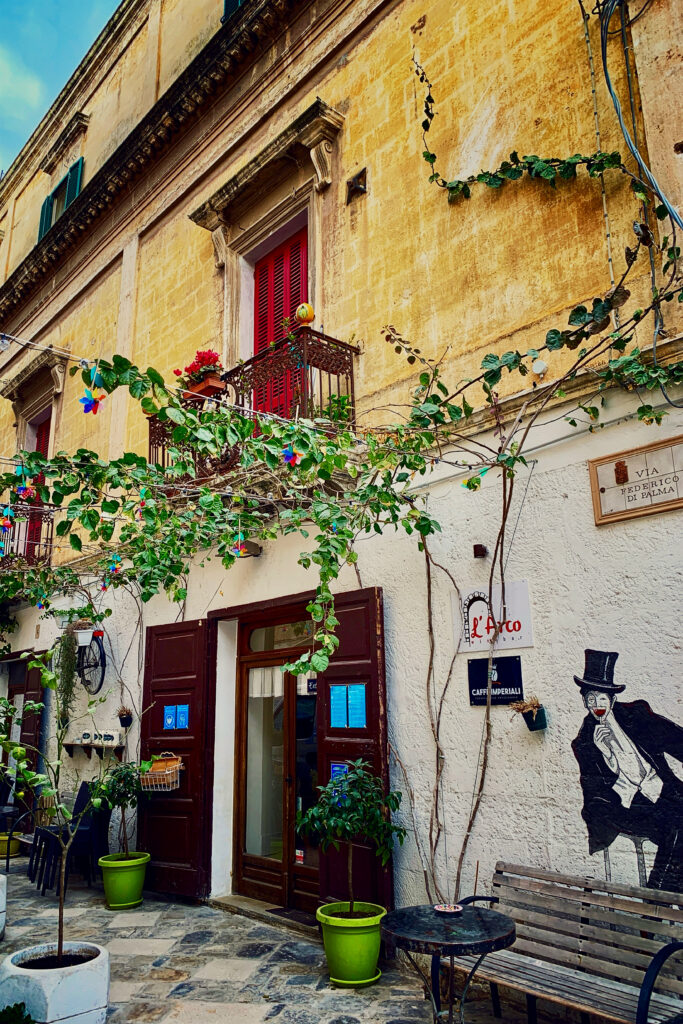
Exploring the Centro Storico
Grottaglie’s old town unfolds behind the Castello Episcopio and the Cathedral of San Francesco de Geronimo (named after the town’s 17th-century saint). Here you’ll find a maze of pale stone alleys, baroque balconies, and vine-covered facades. Highlights include:
- Castello Episcopio – Built in the 13th century and expanded in the 15th, this fortress was once the residence of the archbishops of Taranto. Today it houses the Museo della Ceramica, a must-visit for understanding the evolution of local ceramic styles.
- Chiesa Madre di Grottaglie – A baroque cathedral whose interior retains some beautiful altarpieces and frescoes.
- Grotto di San Biagio – Just outside town, this rocky crypt houses some of the region’s most ancient religious frescoes, and hints at the town’s early monastic past.
Take your time walking the vicoli – this is one of the few places in Puglia where you’ll see both sacred icon niches and spray-painted slogans on the same wall.
Where to Eat in Grottaglie
You’re in deep Taranto country, so expect earthy, hearty cooking with bold flavours. Here are our tried-and-tested favourites:
- Macchiaviva Bistrot – Macchiaviva Bistrot has become our default Grottaglie restaurant. A lovely space matched by excellent food. Serving up traditional cuisine, using ingredients sourced locally from artisan producers. Run by sisters Anna (front of house) and Loredana in the kitchen, cooking with her mama Carmela, they are knowledgable about ingredients and wine. Amazing dessert contributions inspired and made by their mama | Via Cavour 13, 74023 Grottaglie | +39 099 450 4695.
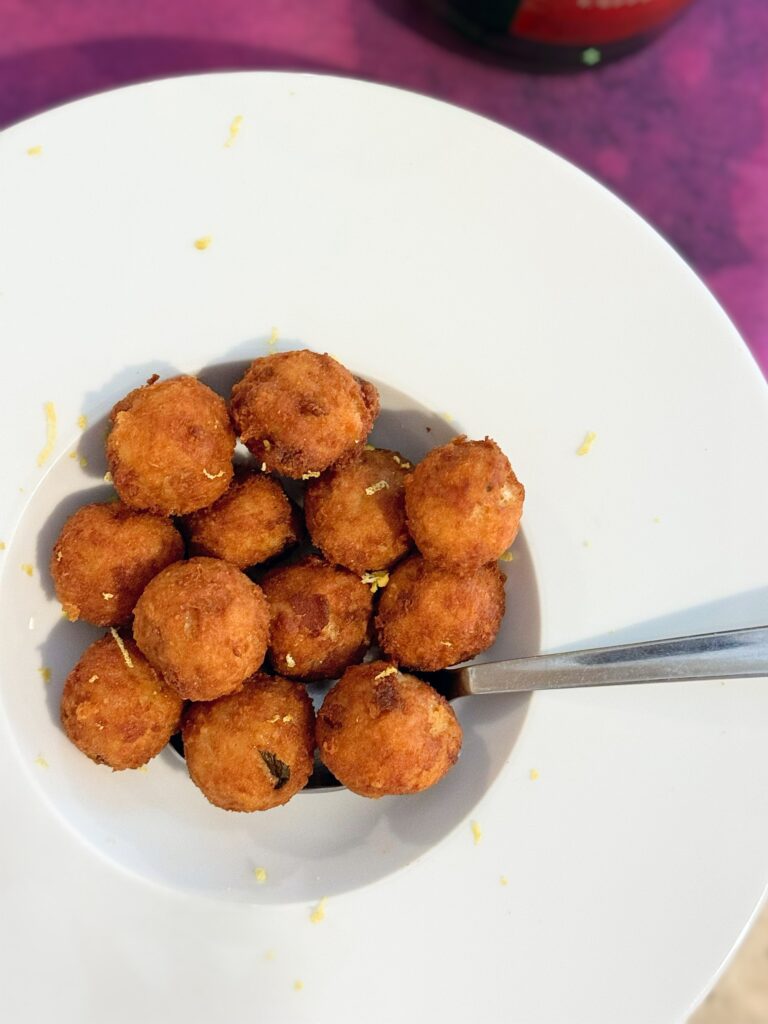
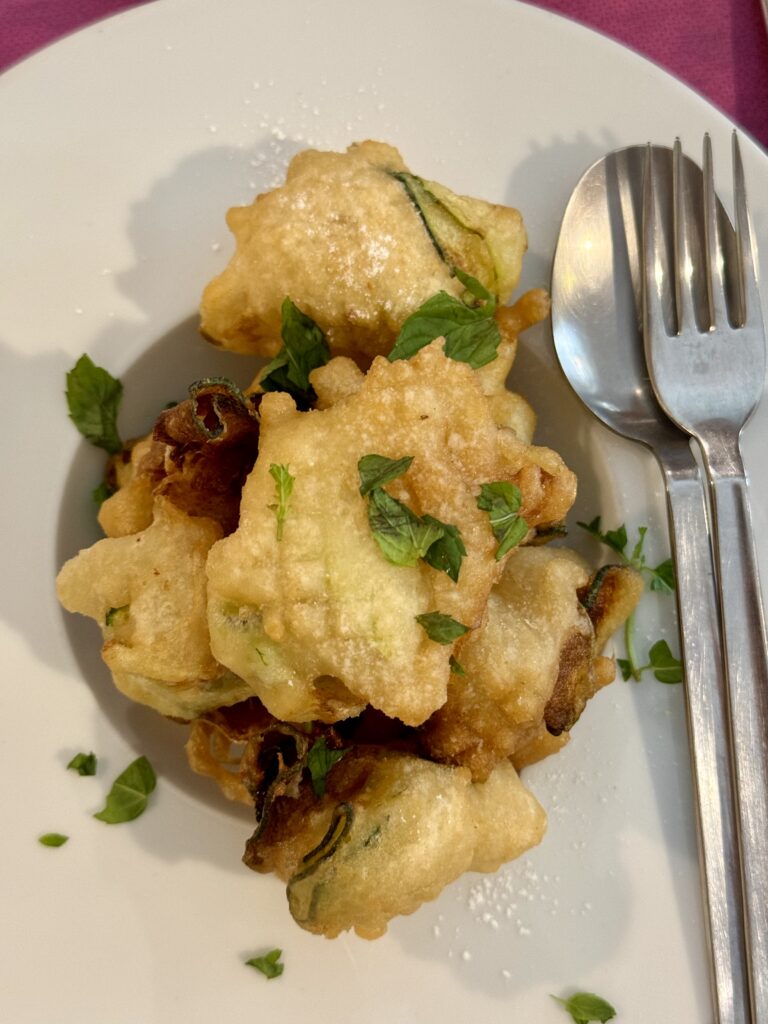
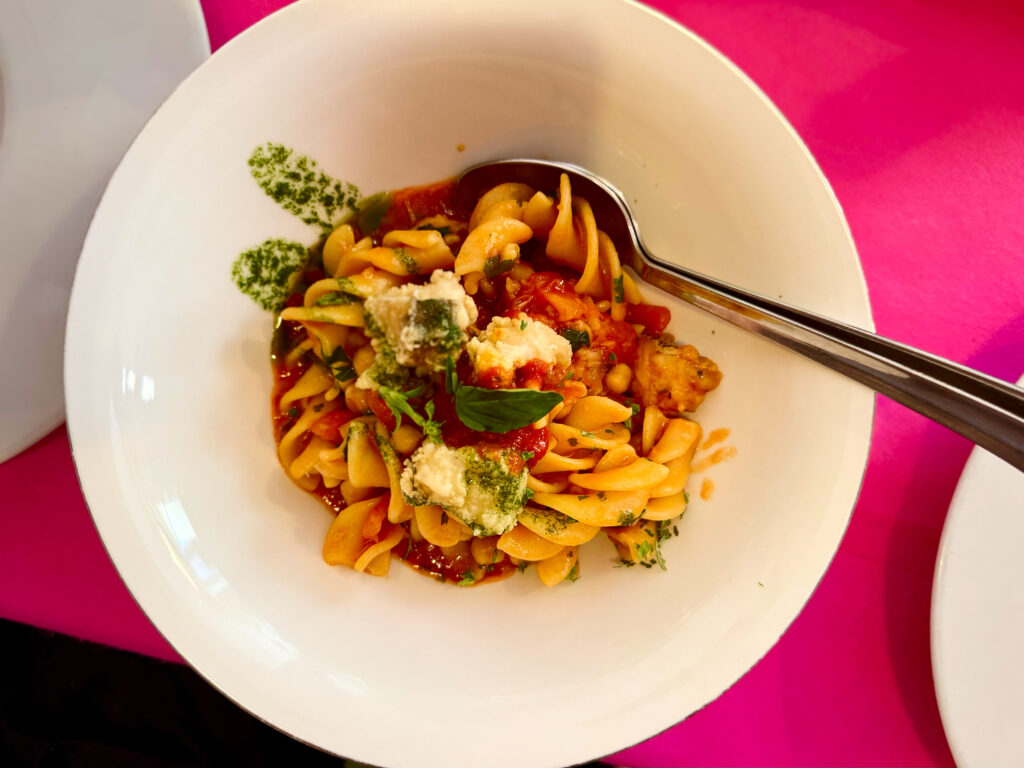
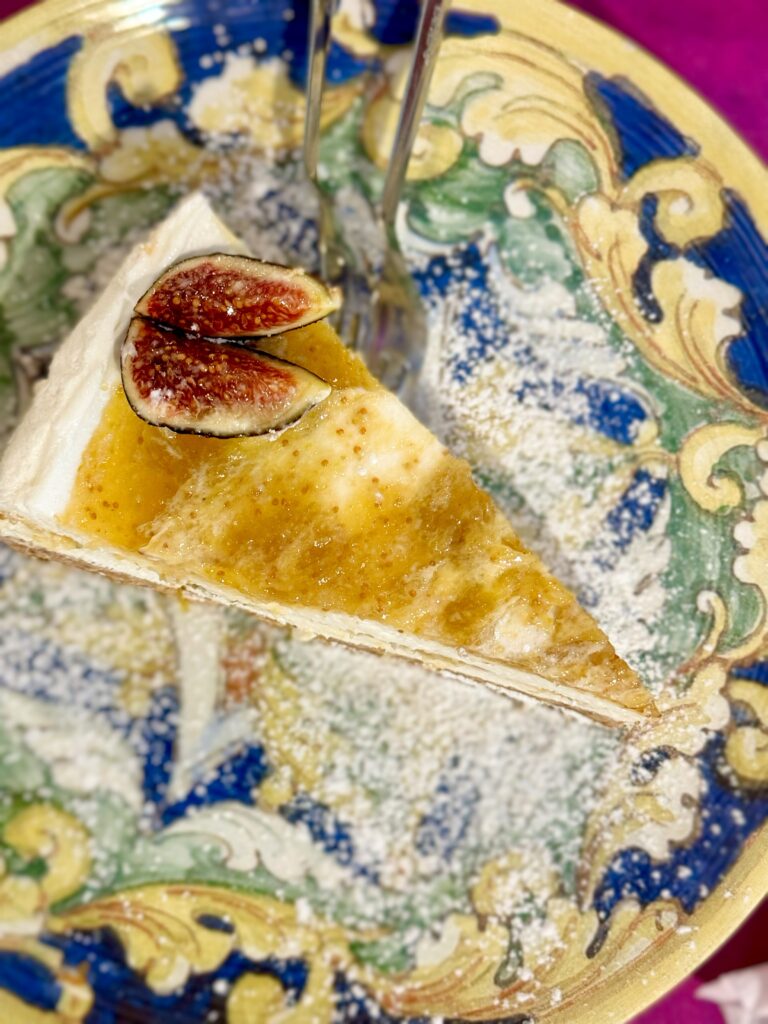
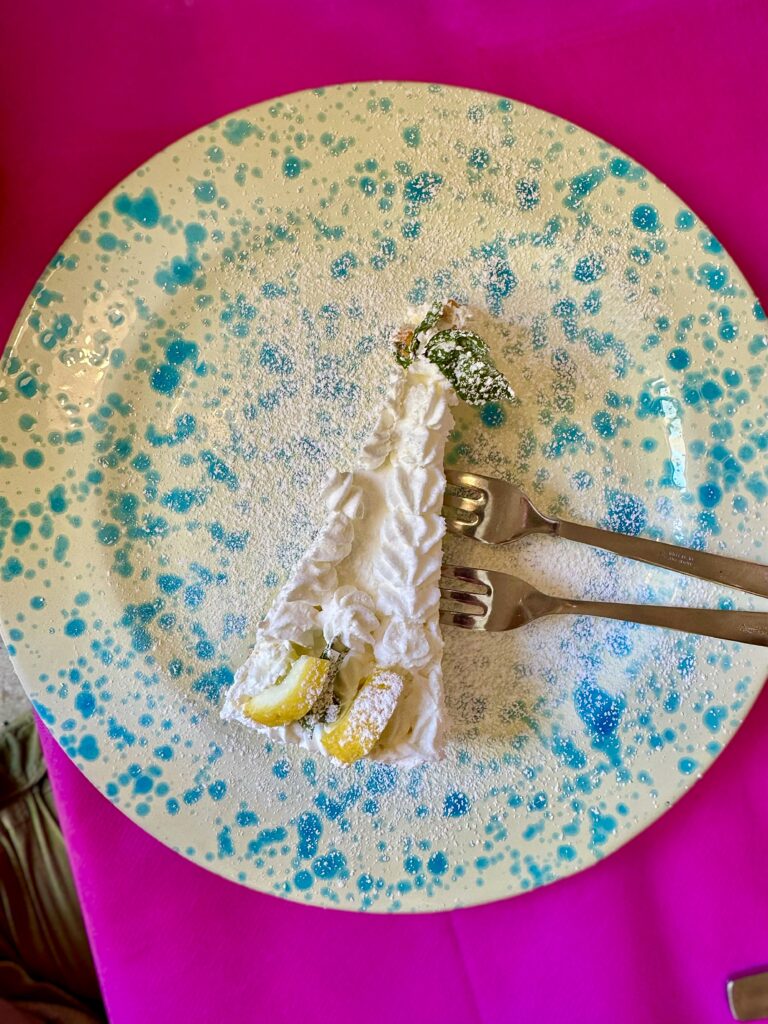
- La Luna nel Pozzo – Slow food, the inside is a cosy, intimate setting. The outside terrace is set on the side of a busy, main road. Trattoria la Luna nel Pozzo has delicious, traditional dishes in the slow food tradition, run by husband and wife team | Via L. da Vinci, 4, 74023 Grottaglie TA | +39 373 784 2289
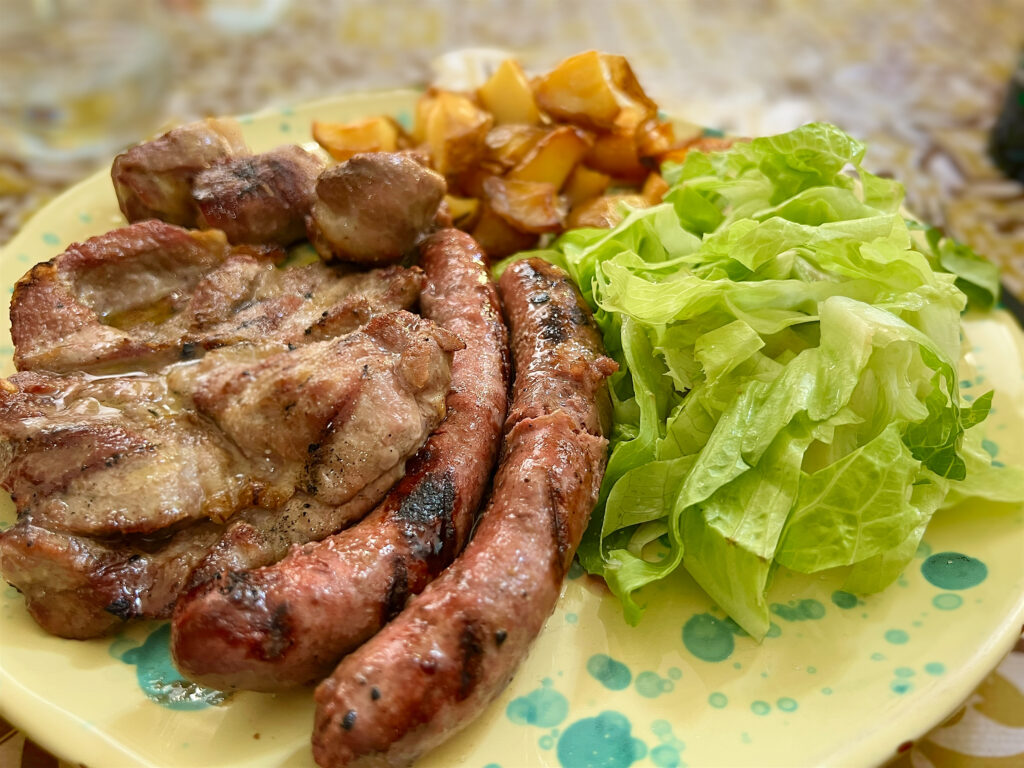
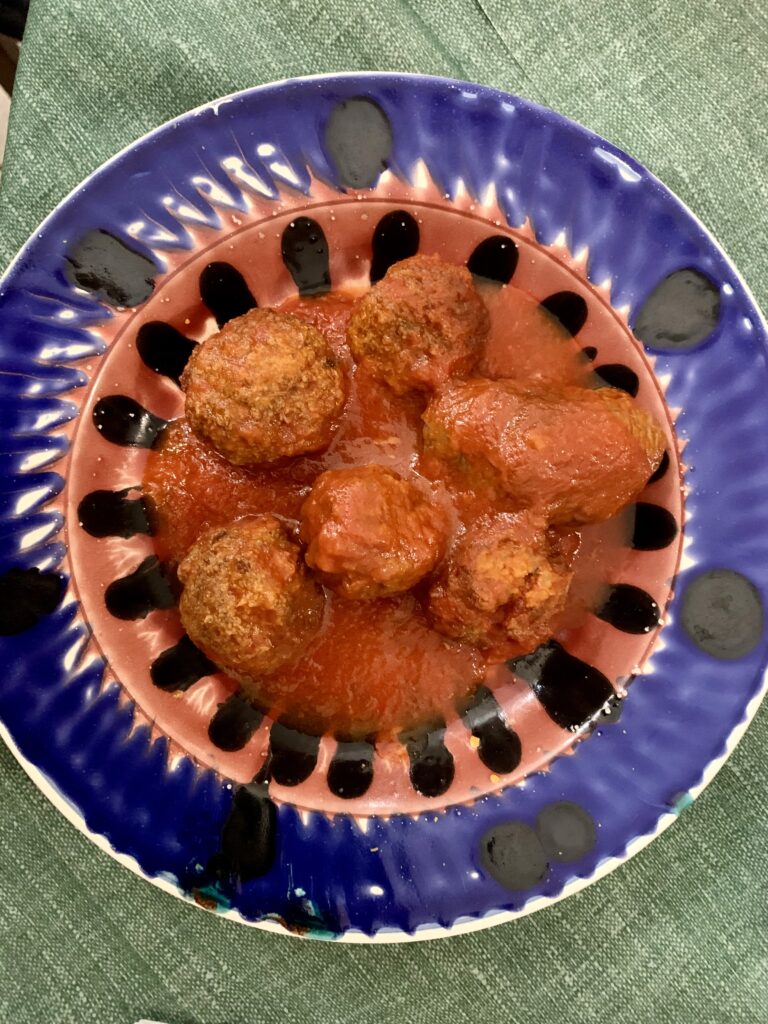
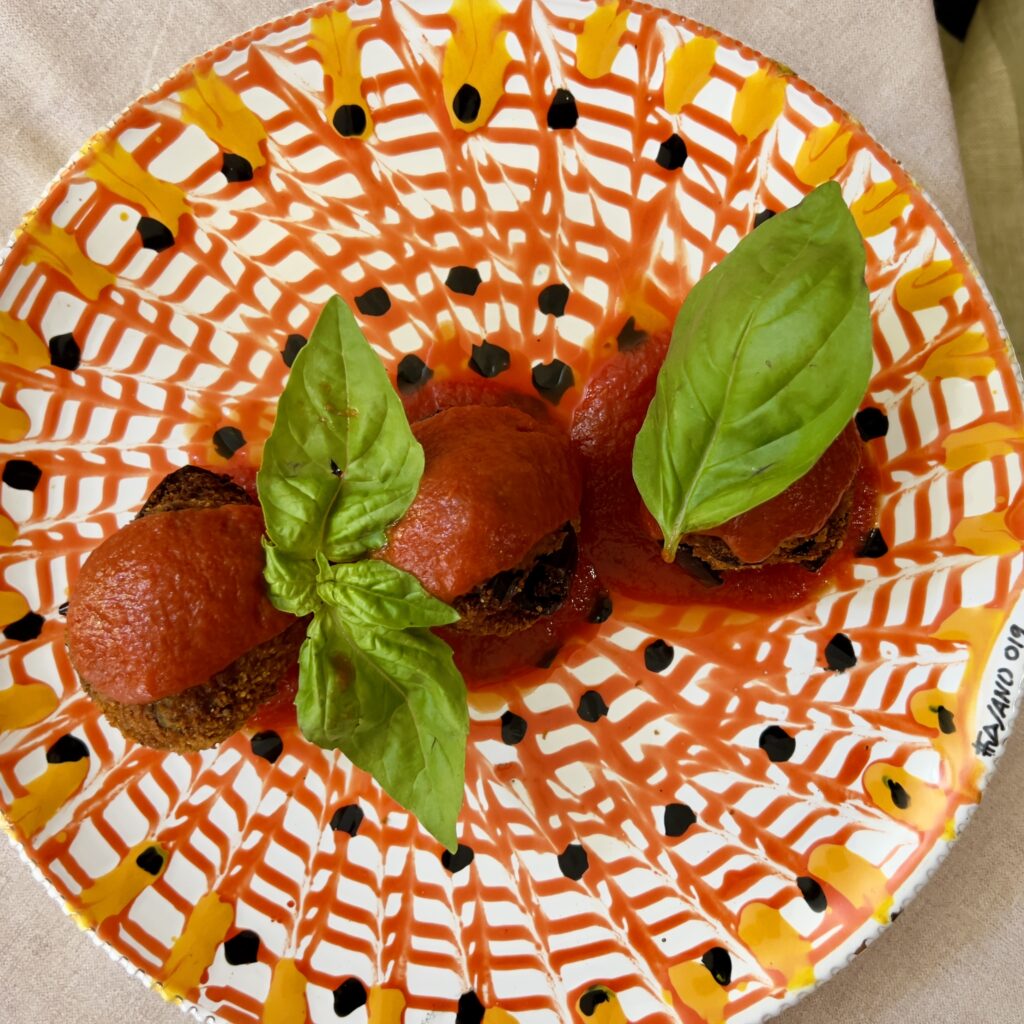

For coffee, we recommend ‘Bar delle ceramiche’, they usually make their own pasticciotti with excellent filling.
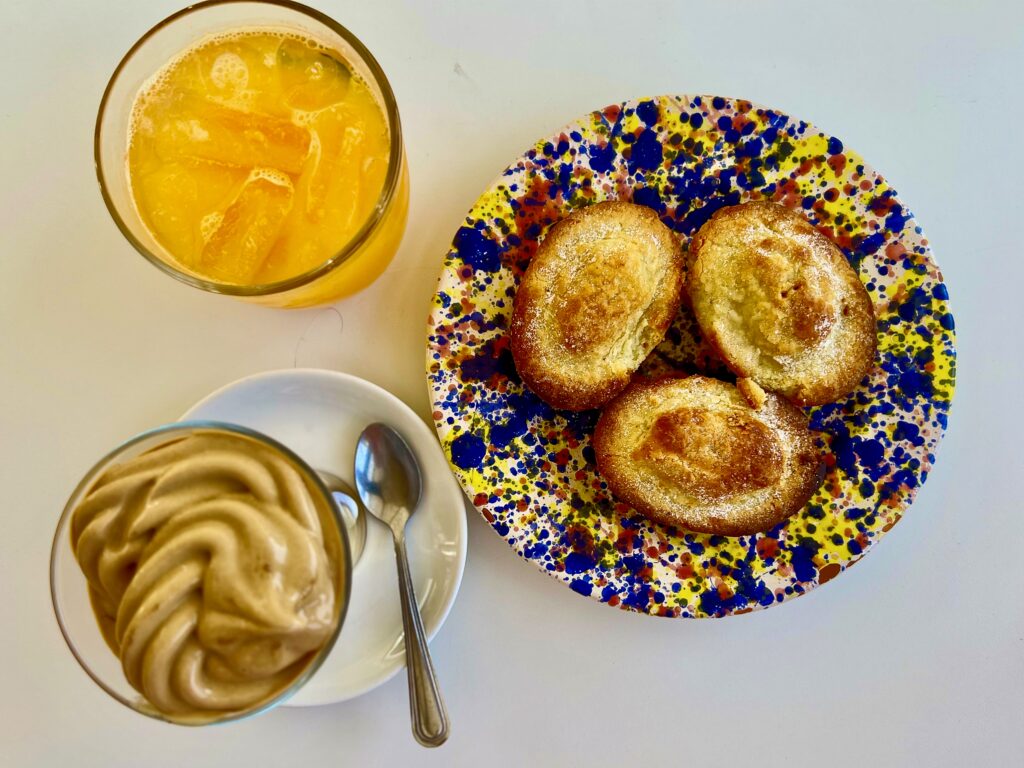
When to Visit
Grottaglie is pleasant year-round, but the best time to visit is spring or autumn, when temperatures are mild and you can enjoy the ceramics quarter at a relaxed pace. In December, the town hosts the Mostra della Ceramica Presepe, showcasing handcrafted nativity scenes in clay, some traditional, others wildly imaginative.
Getting There
Grottaglie is easily accessible by car – just 30 minutes from both Taranto and Brindisi. There’s also a small train station with regional service, but you’ll need wheels to explore the surrounding countryside or visit nearby towns like Martina Franca or Francavilla Fontana.


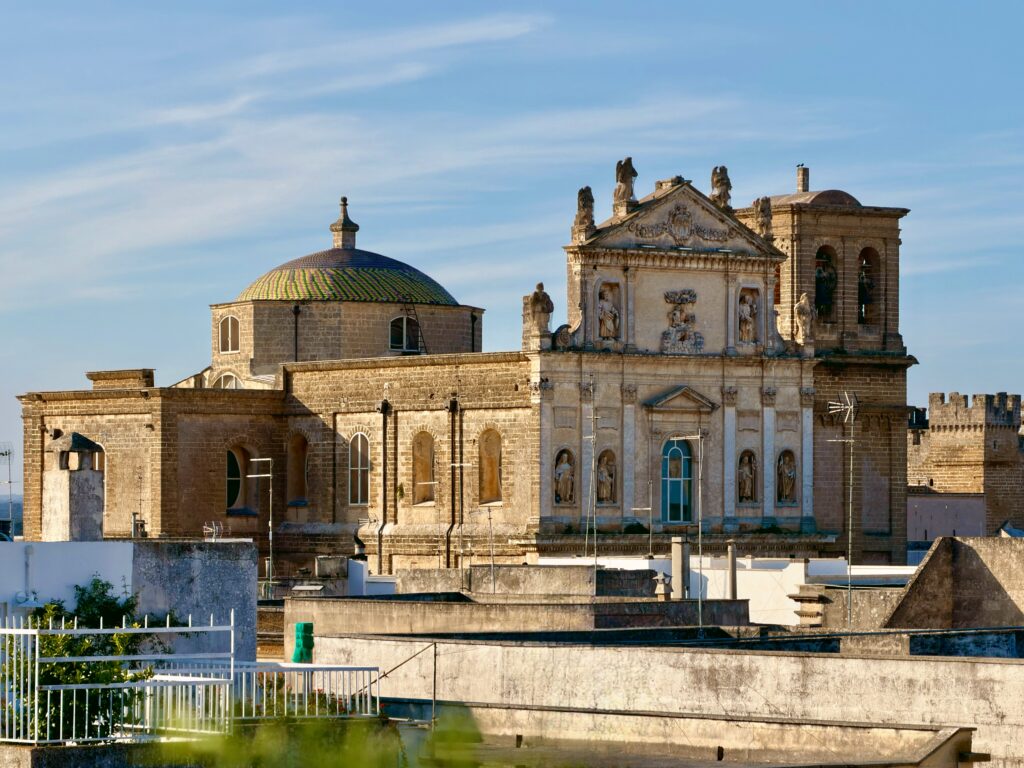

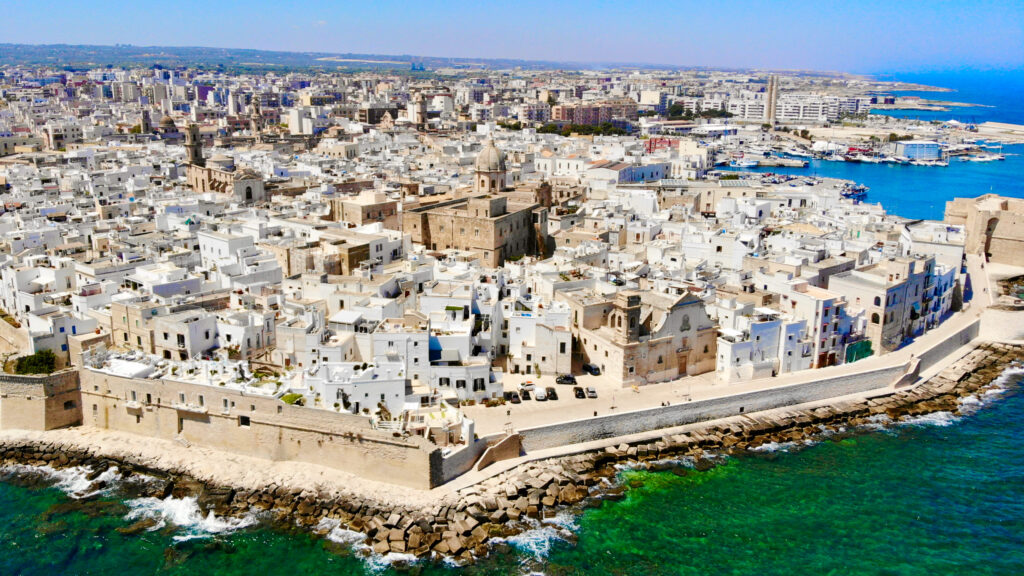
One Comment